
The Free Press

Alan Johnson gave this speech in 2014, after the 50-day military conflict between Israel and Hamas. We’re publishing it today, lightly edited for clarity, because we believe the myths are still with us and are still poisonous, radically misshaping the Western understanding of Hamas, Israel, and the history of the conflict, especially on the liberal left.
The horror of the 50-day conflict between Israel and Hamas is known to everyone here. You didn’t just watch it on TV. You had anguished conversations with your family and friends at home and in Israel.
You knew it was a legitimate act of self-defense by Israel against the rockets and the tunnels and the antisemitic hate of Hamas.
You knew Israel had offered Hamas “quiet for quiet” day after day in early July, holding back as the Hamas rockets rained down on Israeli civilians.
You knew that no one in Israel wanted this war. You knew Israel accepted an Egyptian cease-fire proposal seven days into the conflict while Hamas rejected it, fired more rockets, and used the terror tunnels to try and murder Israelis.
But on TV, we were presented with something quite different: a motiveless assault by a cruel IDF on Palestinian children. For a week or so, Israel’s right to self-defense was acknowledged. But then, as the number of casualties rose, Israel’s actions were called “disproportionate,” then “unjustifiable.” Then Israel was accused of “deliberately targeting civilians,” and a “slaughter of the innocents.” Before the conflict was over, the terms child killers and war criminals could be heard.
Make no mistake. Israel took a blow to the solar plexus when it came to global public opinion.
We saw several large demonstrations in London: criticism of Hamas was nowhere, but the demonization of Israel was everywhere.
We saw the National Union of Students vote to boycott Israel.
We saw the Labour Party abandon its balanced position. Ed Miliband “differentiated” the Labour Party from the Conservatives, condemning Israel’s necessary ground operation to deal with Hamas’s terror tunnels as “unacceptable and unjustifiable.” He attacked David Cameron day after day “for not condemning Israel’s unacceptable and unjustified killing of civilians in Gaza.” One of his MPs, Grahame Morris, asked the Prime Minister why returning lone IDF soldiers were not being treated in the same way as returning ISIS jihadis.
The low point was perhaps when Labour’s John Prescott, the former deputy prime minister of this country for many years, used his Daily Mirror column, twice, to say Gaza was akin to a “concentration camp” and Israel was akin to the guards.
We saw “Holocaust inversion” everywhere. You know the kind of thing—Bibi morphs into Hitler, the IDF into the SS, and so on.
And we had Vince Cable calling for a review of arms exports to Israel if. . . Israel responded one more time to those Hamas rocket attacks.
The point is this: we mostly lost the war to interpret the war.
Why?
I want to suggest that one important reason was that six myths about Hamas and Gaza took hold. These myths gave people a framework of understanding that hurt Israel, badly. Many people could not see Israel plainly. They could only see the evil caricature constructed by the six myths.
First Myth: The Israeli Blockade of Gaza Is Motiveless and Cruel, and It Is the Cause of the Hamas Rockets.
On July 20, 2014, Jon Snow, the anchor of Channel 4 News, tweeted, “If you strangle a people, deny them supply, for years, extreme reaction is inevitable. The one begets the other.”
As a generality, that is a truism. But as an analysis of the current conflict in Gaza, it is based on the fallacy that the Israeli blockade of Gaza led to Hamas rockets from Gaza. In fact, the rockets led to the blockade.
The myth distorts our understanding of why these escalations keep happening and what will make a durable peace possible.
The myth frames the Israeli blockade of Gaza as motiveless and cruel at best, demonic at worst.
The myth dresses up the Hamas rockets falling on Israeli civilians as “noble” acts of resistance. (The word is Norman Finkelstein’s.)
The myth makes us think that if only Israel “lifted the blockade,” then peace would break out.
The myth spreads because of ignorance. It is a willed ignorance. An ignorance clung to in the face of the facts.
Fact: When Israel left Gaza in 2005, the Israeli prime minister Ariel Sharon—who, like Rabin and Barak before him, and like Olmert after him, had crossed his Rubicon, finally accepting the need to divide the land—said: “We desire a life living side by side, in understanding and peace. Our goal [in disengaging] is that the Palestinians will be able to live in dignity and freedom in an independent state, and, together with us, enjoy good neighborly relations.”
Fact: The reply from the Hamas bomb-making chief Mohammed Deif was instant. On the website of the Izz-al Din Qassam Brigades, he declared: “I thank Allah the exalted for his support in the jihad of our people. I ask for your assistance to our jihad. . . . We shall not rest until our entire holy land is liberated. . . . To the Zionists we promise that tomorrow all of Palestine will become hell for you. . . ”
Fact: Israel left Gaza after signing an Agreement on Movement and Access with the Palestinian Authority, which gave the Palestinians control over their own borders for the first time in history, allowed for imports and exports, and even approved construction of a seaport and discussions on an airport. (Unfortunately, Hamas does not respect deals made between the PA and Israel.)
Fact: Hamas launched a coup in 2007, took over the Gaza Strip, drove out its Palestinian political rival Fatah, threw their fellow Palestinians from rooftops, and declared, as the new rulers of Gaza, that they would now use the Strip as a base to destroy Israel.
Fact: As a direct result, not only Israel but also Egypt put restrictions on the borders with Gaza. Israel also instituted a legal maritime blockade around Gaza to keep rockets and other weapons out of the hands of Hamas, while letting food and other humanitarian aid in.
Fact: A UN inquiry (the 2011 Palmer Report) determined that Israel’s policy was legal, given the threat it faced.
Fact: In March 2014, Israel intercepted an Iranian ship, with a cargo of weapons to Hamas in Gaza, including advanced M-302 surface-to-surface missiles, showing again why the naval blockade is necessary.
David Horovitz, the British-born editor of The Times of Israel, expressed the exasperation of many about all this ignorance. He pleaded for opinion-shapers overseas to “exercise just a smidgen of intellectual honesty” and stop contriving not to see that “If there was no rocket fire from this non-disputed enclave, there would be no Israeli response, and nobody would be dying.”
That’s the first myth.
Second Myth: Hamas Seeks Peace. They Are a Negotiating Partner-in-Waiting Being Spurned by Israel.
“Why not speak to Hamas directly? You haven’t got the courage!” Jon Snow, the Channel 4 News presenter, shouted at the Israeli spokesman Mark Regev on July 16, 2014.
Snow, like many Western liberals, tends to treat pathological movements with no negotiable grievance as if they are rational political movements with grievances that can be negotiated. This “rationalist naivety” leads to a terrible error: we imagine everyone else, deep down, thinks like us. And you know something? They really don’t.
And that error makes it impossible for many people to grasp the nature of many modern religio-political movements, especially radical political Islam.
Fact: Hamas considers the destruction of Israel to be sacred work and its charter encourages all good Muslims to kill Jews, who it blames for all the wars and revolutions.
Fact: Hamas foreign minister Mahmoud al-Zahar has said, “Israel is a vile entity that has been planted on our soil, and has no historical, religious, or cultural legitimacy. We cannot normalize our relations with this entity. . . . [We say] no to recognizing Israel, regardless of the price we have to pay [for our refusal].”
Fact: Al-Aqsa TV (Hamas) broadcast this message on July 9: “Zionists, wait and see terror attacks, stabbing everywhere. Wait for suicide attacks on every bus, café, and street. Wait for the rage and for revenge for Gaza, wait for the flames of the West Bank, inside you.”
Hamas describes Palestine as “an Islamic Waqf [endowment] consecrated for future Muslim generations until Judgment Day” or that it pledges “Israel will exist until Islam will obliterate it, just as it obliterated others before it.”
Hamas rejects all possible compromise with Israel, and all possibility of a negotiated peace in the following terms: “There is no solution for the Palestinian question except through jihad. Initiatives, proposals, and international conferences are all a waste of time and vain endeavors.”
Few people really know what passes for children’s television on the official Hamas-controlled Al-Aqsa TV (May 2, 2014). Palestinian kids are running home from school, tuning in, and being told it is good to shoot Jews. All Jews. Blue Peter it isn’t.
So that is the second myth, that Hamas seeks peace.

Third Myth: Hamas Rockets Are Harmless. Iron Dome Stops Them Anyway. Israel Could Just Ignore the Rockets.
Reasonable people can acknowledge the nature of Hamas but still ask why Israel can’t stoically accept the rocket fire in order to avoid Palestinian civilian casualties.
There are three answers to this question.
First, Iron Dome, Israel’s missile defense system, is not perfect. That matters hugely because more than 15,200 rockets and mortars, an average of more than three rocket attacks every single day, have targeted Israel since 2001. Some get through, and they kill Israelis, such as Aharon Smadga, Itzik Amsalem, and Mira Sharf in Kiryat Malachi in 2012.
Barack Obama’s July 2008 remark struck a chord with many: “If somebody was sending rockets into my house where my two daughters sleep at night, I’m going to do everything in my power to stop that. I would expect Israelis to do the same thing.”
The second reason that Israel can’t just ignore the Hamas rockets is that after 13 years of falling rockets, wailing sirens, and running to bomb shelters, the children of Israel are being slowly traumatized. This is often ignored by the international media, but the fact is that ending the trauma of both Israel and Gaza’s children is now inseparable from silencing the rockets of Hamas and closing the tunnels of Hamas.
The city of Sderot, in southern Israel, is less than two kilometers from the Gaza Strip. It first came under Palestinian rocket fire in 2001; Hamas would time the rockets to hit the school run. Between April 2001 and December 2008, more than a thousand alarms were sounded in or near Sderot. By then, according to NATAL, the Israel Trauma Center for Victims of Terror and War, between 75 percent and 94 percent of Sderot children ages 4 to 18 were exhibiting symptoms of post-traumatic stress.
In short, the Sderot kids were being terrified. And their traumatic stress could never become post-traumatic stress because the sirens have never stopped screaming and the Hamas rockets have never stopped falling. The director of the Sderot Mental Health Center, Dr. Adrianna Katz, has noted that young patients in recovery often experience the Red Color siren as a trigger that makes them re-experience their PTSD symptoms.
The personal stories of those under the rockets are at odds with the Western perception of the rockets as a mild irritant that can be tolerated. David Wolfson, who assists trauma victims after rocket strikes in Ashkelon, told Human Rights Watch, “We’ve been under rocket fire now for so long that some people have been near rocket hits two times, and have been re-traumatized to the point where they cannot take care of themselves.”
Now put the fact that the Hamas rockets traumatize together with the fact of the ever-greater reach and ever-greater potency of those rockets. By 2009, Amnesty International was reporting that 1 million Israelis now lived in fear of rockets as Hamas and Palestinian Islamic Jihad fired on “homes, businesses, schools, other public buildings, and vehicles in and around towns and villages in southern Israel.” By 2012, Iranian-supplied Fajr 5 missiles were reaching Tel Aviv and Jerusalem. An M-302 reached 100 miles into Israel this summer. In short, to simply accept the Hamas rockets is to simply accept the traumatization of Israeli childhood.
Third, it’s not just rockets. The threat from Hamas comes also in the form of terror tunnels: over 30 of them, 14 reached inside Israel, some over one kilometer long and electrified, and built with the concrete that Israel had agreed to allow in after receiving promises that it would be used for civilian reconstruction projects.
The tunnels formed an interconnected network, enabling a force to move into Israel to mount a mass casualty terrorist attack before retreating.
Little wonder 300,000 Israelis fled. But these internally displaced Israelis from the south were also mostly ignored by the international media.
And Hamas is clearly trying to develop a SEAL team. Amphibious assault teams swam 2–3 kilometers with light arms and RPGs and emerged on a beach near an Israeli military installation. And Hamas is also trying to develop drones. And if another reason were needed, Hamas rockets led to various national air traffic authorities refusing to fly to Ben-Gurion Airport from July 22–24.
No, Israel can’t just sit back and ignore Hamas.
Fourth Myth: Israel Targeted Civilians in Gaza.
Israel faces an excruciating dilemma: how to use force against the terrorists of Gaza, without that force endangering the civilians of Gaza. It has developed three responses. None are foolproof.
The first Israeli response to the dilemma is to gather intelligence.
Targets are selected following long-term intelligence-gathering indicating a direct link to terrorist infrastructure. I have sat with Israeli Air Force spotters responsible for monitoring Gaza from the skies and seen how intimate the relationship is between intelligence and the use of force, and how dedicated the soldiers are to getting it right. (The opening of the documentary The Gatekeepers captured the nature of this work and the excruciating dilemmas it throws up.)
The second Israeli response to the dilemma is to issue warnings.
Israel uses a variety of methods—and only Israel does this—to avoid strikes causing civilian casualties. These methods include leaflet drops, texting, phone calls to buildings that are going to be bombed, the use of pinpoint precision rockets, and the use of the “knock on the roof” tactic—where Israel deploys a “scare” bomb that only makes noise in order to warn civilians leave the targeted area.
Missions are aborted or altered when they may cause civilian deaths, sometimes at huge cost to Israel. Amos Yadlin, former deputy commander of the Israeli Air Force, recalls:
In August 2002, we had all the leadership of Hamas in one room, and we knew we needed a 2,000-pound bomb to eliminate all of them. Think about having Osama bin Laden and all the top leadership of al-Qaeda in one house. However, use of a 2,000-pound bomb was not approved—we used a much smaller bomb—and they all got up and ran away.
The third Israeli response to the dilemma is self-limitation. To state the obvious, Israel does not use all the force it could use against Hamas.
As a result of these three Israeli responses to the dilemma of how to strike Hamas combatants while minimizing Gazan noncombatant casualties—intelligence-gathering, the use of warnings, and self-limitation—the ratios of combatant to noncombatant deaths in the three rounds of conflict with Hamas have been exceptional. Worthy. As British Colonel Richard Kemp noted about the 2008–2009 Gaza conflict:
A United Nations study shows that the ratio of civilian to combatant deaths in Gaza was by far the lowest in any asymmetric conflict in the history of warfare. The UN estimates that there has been an average three-to-one ratio of civilian to combatant deaths in such conflicts worldwide. Three civilians for every combatant killed. That is the estimated ratio in Afghanistan: three to one. In Iraq, and in Kosovo, it was worse: the ratio is believed to be four-to-one. Anecdotal evidence suggests the ratios were very much higher in Chechnya and Serbia. In Gaza, it was less than one-to-one.
In the 2012 conflict, 1,600 Israeli strikes against long-range missiles and terror infrastructure caused 60–70 Palestinian civilian deaths. Each was a tragedy. Absolutely. But the ratio of combatant to noncombatant deaths was without precedent in modern warfare.
So why, despite those efforts, do civilian casualties still happen, if there is an absence of intent?
First, it is in the very nature of what the military theorist Carl von Clausewitz famously called “the fog of war”—intelligence is always incomplete, sometimes mistaken, while soldiers and planners are not just subject to human limit like anyone else but have to act in a fevered and terrifying climate.
Second, the terrible destructive power of modern weapons means that their sustained use within urban settings in which combatants and noncombatants are commingled, will always—despite every effort—produce civilian casualties.
Third, Hamas deliberately engineers the commingling of combatants and noncombatants. It consistently and intentionally uses the people of Gaza as human sacrifices and deliberately locates its rocket-launching sites, tunnels, and fighters inside housing complexes, mosques, hospitals, and schools. Look, for example, at this IDF map of the densely populated Shuja’iya District, east of Gaza City.
The dilemma is this: do terrorists who fire from behind their civilians—at your civilians—have immunity on the grounds that their civilians may be killed? Israel points out that the West may soon face that dilemma too, in other conflicts, and warns that we will find out that granting those terrorists immunity from attack is not a real-world option.
The IDF estimates that in the 2014 conflict, 45 percent of the Palestinian dead were combatants and 55 percent were civilians. Again, despite the talk of the targeting of civilians, the ratio contrasts sharply with the international media depicting an onslaught like no other. In recent asymmetric wars (between regular armies and irregular / terrorist forces) in Afghanistan and Iraq, the ratios have been much higher, with three, four, or five civilians dying for every combatant.
Of course, the long-term solution is politics: the reconstruction of the Gaza Strip in return for the demilitarization of the Strip. That’s what Israel has been seeking since 2005. It is what is agreed in the Oslo peace accords. It is supported today by the U.S., EU, UN, Egypt, the Palestinian Authority (PA), and Israel. But Hamas won’t give up the rockets.
No, Israel does not target civilians.

Fifth Myth: The Media Can Report Freely from the Gaza Strip, So We Are Getting a True Picture of the Conflict.
It can’t, so we are not. Instead, we are getting emotionally potent oversimplifications.
In 2009, Israeli spokesman Mark Regev tried to point out to Channel 4’s Jon Snow that what Gazans say to Western reporters may be self-censored because of Hamas threats. “Gaza is a very authoritarian regime, sir, do you deny that?” asked Regev. Snow replied angrily and instantly and unthinkingly, “There is no question of [our reporter] having been strong-armed by Hamas, or indeed, the people that he has spoken to being strong-armed by Hamas.”
No question? Really?
Former Soviet dissident Natan Sharansky pointed out that when journalists forget that there is a “black-and-white line that divides free societies from fear societies,” they may end up creating an upside-down world in which “a strong dictator can be seen as a reliable partner for peace.” In the name of peace, he pointed out, “pacifists in the West marched alongside emissaries of the KGB who, posing as peace activists, sought to undermine the efforts of the free world to defend itself against Soviet aggression.” The tyrants deliberately twist our “deep desire for peace,” wrote Sharansky, and “turn [it] into a weapon of tyranny.”
And that is what happened during the summer. Hamas wanted to reduce the reports coming out of Gaza to what Reinhold Niebuhr once called “emotionally potent oversimplifications,” and they were mostly successful.
Hamas manipulated and intimidated the media in Gaza, and that fact should not have been kept from us. BBC editorial guidelines state that “We should normally say if our reports are censored or monitored or if we withhold information, and explain, wherever possible, the rules under which we are operating.” (Section 11.3.1 of BBC Editorial Guidelines on accuracy and impartiality in times of War, Terror, and Emergencies.)
We know Hamas intimidated journalists because the Foreign Press Association (FPA), no less, issued an astonishing statement during the conflict about the “blatant, incessant, forceful, and unorthodox” intimidation of journalists in the Gaza Strip by Hamas. “In several cases,” they complained, “foreign reporters working in Gaza have been harassed, threatened, or questioned over stories.” The FPA said this amounted to “denying readers and viewers an objective picture from the ground,” adding, “we are also aware that Hamas is trying to put in place a ‘vetting’ procedure that would, in effect, allow for the blacklisting of specific journalists. Such a procedure is vehemently opposed by the FPA.”
Let’s review some of what we know about Hamas’s intimidation of the media.
—The Indian television station NDTV broadcast (then posted on its internet site on August 5) a report by Sreenivasan Jain. It showed rockets being fired from a tent next to his hotel. In the accompanying text on NDTV’s website, Jain wrote that it was published “after our team left the Gaza Strip—Hamas has not taken very kindly to any reporting of its rockets being fired.” Jain worried about media self-censorship. He went on: “But just as we reported the devastating consequences of Israel’s offensive on Gaza’s civilians, it is equally important to report on how Hamas places those very civilians at risk by firing rockets deep from the heart of civilian zones.” Jain wrote of “the fear which hobbles the reporting such material: fear of reprisals from Hamas against us,” asking, “how long do we self-censor because of the fear of personal safety in return for not telling a story that exposes how those launching rockets are putting so many more lives at risk, while the rocket-makers themselves are at a safe distance?”
—An op-ed in The Australian noted that after Nine Network reporter Peter Stefanovic tweeted that he had seen rockets fired into Israel from near his hotel, he was threatened by pro-Hamas tweeters and warned, “in WWII spies got shot.”
—The Wall Street Journal’s Nick Casey posted a photo of a Hamas spokesman being interviewed from a room in the hospital along with this tweet: “You have to wonder (with) the shelling how patients at Shifa Hospital feel as Hamas uses it as a safe place to see media.” After “a flood of online threats,” the tweet was deleted.
—John Reed of the Financial Times was reportedly threatened after he tweeted about rockets being fired from the same hospital.
—Following his departure from Gaza, Italian journalist Gabriele Barbati tweeted on July 29, “Out of #Gaza far from #Hamas retaliation: misfired rocket killed children yday in Shati. Witness: militants rushed and cleared debris.”
—French Palestinian journalist Radjaa Abou Dagga wrote an article for French newspaper Libération on July 23, detailing how he was “detained and interrogated by members of Hamas’s al-Qassam Brigade at a room in Shifa Hospital next to the emergency room” and was forced to leave Gaza immediately without his papers. The day after publication, Mr. Dagga asked Libération to remove his article from its website.
—RT correspondent Harry Fear was told to leave Gaza after he tweeted that Hamas fired rockets into Israel from near his hotel.
Hamas worked hard to manipulate the media’s reporting in more subtle ways, too. As reported in The Times of Israel on July 11, the Hamas Ministry of Interior in Gaza published a video in Arabic advising on “effective” social media engagement on Facebook and Twitter during Operation Protective Edge. It contained such directives as “Anyone killed or martyred is to be called a civilian from Gaza or Palestine, before we talk about his status in jihad or his military rank. . . . Don’t forget to always add ‘innocent civilian’ or ‘innocent citizen’ in your description of those killed in Israeli attacks on Gaza.”
The international media knew that Hamas had a long record of shutting down news bureaus, arresting reporters and cameramen, confiscating equipment, and beating journalists. After all, this was documented by the Committee to Protect Journalists. So why was Hamas not held to account?
Well, that takes us to the final myth.
Sixth Myth: Palestinians (and Arabs in General) Do Not Have Agency and Choice, and So Cannot Be Held Accountable and Responsible. Israelis Do and Can, Always and Exclusively.
This is the myth that makes all the other myths believable.
This is the myth that provides the sensibility of bias—the instinctive pattern of feeling and response that people adopt no matter what the issue is, no matter what the facts are.
This is the “unconscious,” so to speak, of so much of the surface discourse about the Israeli-Palestinian conflict. It is the deeply buried assumption that says Israelis and Palestinians have dichotomous natures.
It warps our understanding of the conflict.
Palestinians are understood as a driven people, dominated by circumstance and emotion, lacking choice, below the age of responsibility, never to be held accountable. Israelis are the opposite; masters of all circumstances, rational and calculating, the root cause of everything, responsible for everything.
This is an Orientalist view of the Palestinians as the Other, except this time they are affirmed as noble savages. It smacks of racism. When the Liberal Democrat David Ward MP tweeted that the Palestinian synagogue murderers—men who hacked to death rabbis at prayer—had been “driven to madness,” he removed not only their agency but also their sanity.
It is so often this unexamined assumption, this crude black-and-white thinking, this groupthink, that distorts our understanding of the history of a complex national conflict, the security challenges Israel faces, and the reasons for the failure, thus far, of the peace process.
The simplistic black-and-white view of the natures of Israelis and Palestinians distorts our understanding of the key historical events of the conflict (e.g., the 1948 War, the 1967 War, the collapse of the Camp David peace talks in 2000, Gaza after the 2005 disengagement). The Palestinians are cast in each case as passive victims, a compelled people, a people beyond the reach of judgment. For example, the academic Jacqueline Rose views Palestinian suicide bombers as “people driven to extremes” and argues that Israel has “the responsibility for [the] dilemma” of the suicide bomber.
The simplistic black-and-white view of the natures of Israelis and Palestinians distorts our understanding of Israel’s security needs. The threats Israel faces are simply discounted, and the security measures taken by Israel are reframed as motiveless and cruel acts. For example, the Israeli security (or “separation”) barrier erected to keep Palestinian suicide bombers out becomes the racist Israeli Apartheid Wall erected to keep Arabs segregated from Jews.
For example, Owen Jones at The Guardian wrote that the threats facing Israel were like the threat Mike Tyson (a former heavyweight boxing champion, and rapist) would face from a toddler spitting at him in the street. (Israel’s reaction to the Hamas rockets, Jones argued, could be compared to Tyson smashing the toddler in the face.) This is to present a fascistic terror organization as. . . a defenseless and innocent child.
The simplistic black-and-white view of the natures of Israelis and Palestinians distorts our understanding of the reasons for the failure of the peace process. Excluded from consideration are those parts of the Palestinian national movement that are implicated—its rejectionism, terrorism, authoritarianism, corruption, and its promotion of a vile culture of incitement, demonization, and antisemitism.
As a result, the Palestinians are allowed to take uncompromising and maximalist positions on the “right of return,” and no one challenges them: hey, but that means it’s no longer a “two states for two peoples” solution!
The Palestinians can reject one offer of statehood after another—Camp David, Annapolis—and yet still Israel is to blame for the absence of a Palestinian state.
The Palestinians are allowed to feed their population a diet of hate and incitement and still receive unconditional aid.
The Palestinian Authority can unite with an unreformed terrorist and antisemitic Hamas that wants to destroy Israel, and no one asks why they would do that if they are really interested in peace with Israel?
As for Hamas itself, well, they can break every cease-fire in the summer—even the ones they declared themselves—and pay no price. Israel offered a humanitarian cease-fire seven days into the conflict (conflict started July, first humanitarian cease-fire July 15).
Israel offered/accepted five cease-fires between July 15 and August 1. In each case, Hamas broke the cease-fire or continued firing rockets. These were July 15, 17, 20, 26, and August 1. Israel unilaterally extended the 12-hour July 26 cease-fire by a further 24 hours. This was rejected by Hamas. On August 3, Israel withdrew most of its troops from the Gaza Strip. August 19, a cease-fire extension was violated by Hamas within hours, with 29 Hamas rockets fired within 20 minutes.
Because of the infantilization of the Palestinians, Hamas could locate its rockets and combatants and tunnel entrances in schools, hospitals, and civilians’ homes, and not be asked to explain themselves.
Hamas could place their HQ in the basement of Shifa Hospital, but few journalists even mentioned that fact, let alone criticized them for it.
Hamas could drop 875 rockets on Gazans—they didn’t even make it out of the Strip—but no one points that out.
The Hamas leaders could keep Gazans out of bunkers while sheltering in those bunkers themselves.
They could spout vile antisemitic hate each day.
All of this, and the media only rarely asked tough questions of Hamas spokespeople. (See this list of questions that the media could have asked Hamas, but didn’t, during the conflict.)
Conclusion
Opinion polls suggest that only 20 percent of the public feel warm toward Israel, and 62 percent cold, but these figures are almost identical to the response to the Palestinians (20 per warm vs. 60 percent cold). The majority of the British public takes a balanced or disinterested view toward the conflict.
Two points about those numbers.
First, the vast majority of people are open to Israel’s case.
Second, there is no reason for complacency. Ranged against Israel is a politically savvy global network of real power and reach. The worldview expressed in these six myths has been spread far and wide over a half century by a global network of hugely influential public intellectuals. They are shaping much of the debate about the conflict in Britain because their ideas do not remain in the seminar room but are then “translated” and popularized by determined activists with status and authority in universities, media, churches, trade unions, NGOs, political parties, and popular culture.
The “global creative class” sets the terms for the international standing of a country these days. The soft power of the world’s opinion leaders—broadsheet journalists and commentators, artists of all kinds, and academics in the social sciences and humanities—is decisive in “framing” a state to world opinion.
In our networked and mediatized global society, to lose this class is a strategic danger to Israel. And the danger is real. For decades, an intellectual separation barrier has been built up between Israel and this global creative class.
These six myths are lethal.
Alan Johnson is a senior research fellow at Britain Israel Communications and Research Center (BICOM) and editor of its journal, Fathom. This article first appeared in Fathom.
Become a Free Press subscriber today:

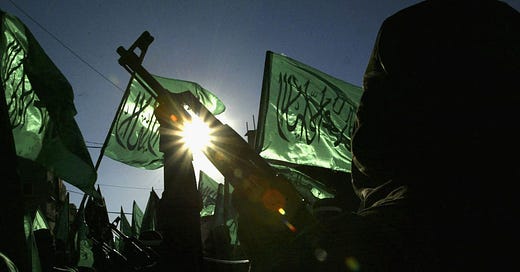



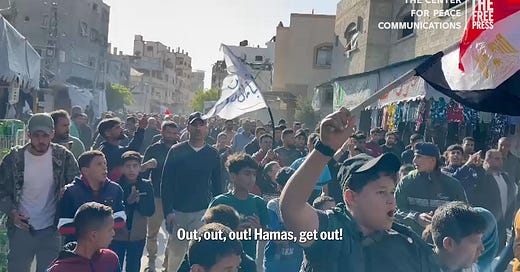
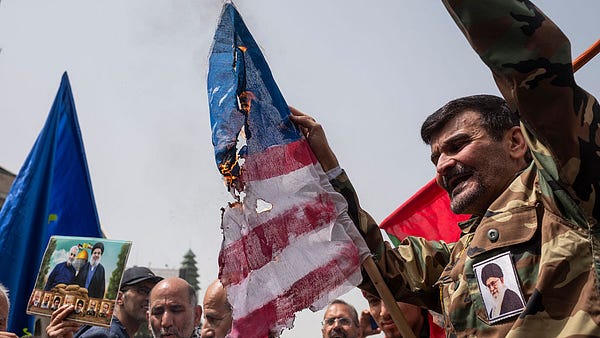

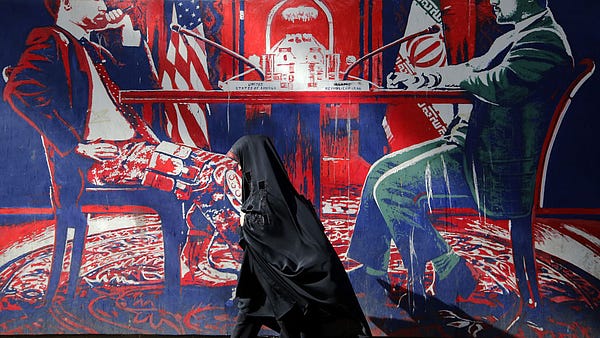

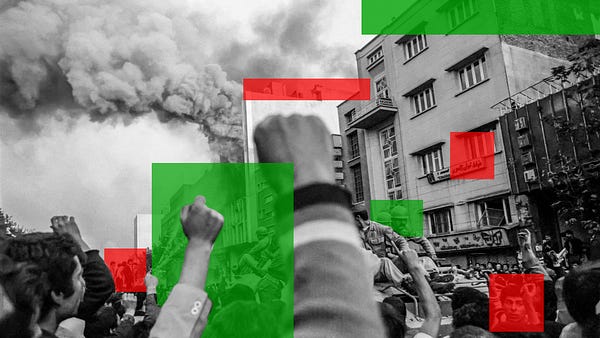

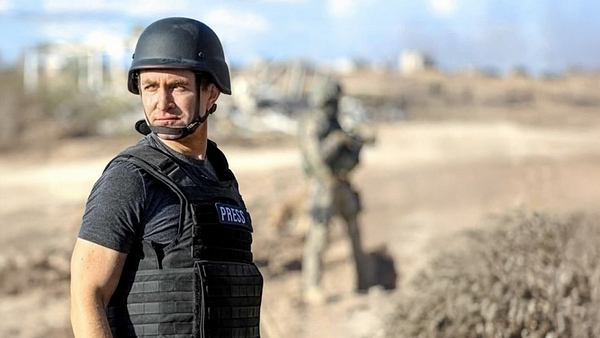

One of the biggest demonstrations in British history too place today, demanding Israel stop defending itself. I'm scared for Israel, with that level of either public ignorance or hostility in advanced countries. This was a helpful article, but academics are already redefining all the terms & slogans - like jihad & from the river to the sea - in their unmistakably Orwellian way.
Alternative headline format least 2 of these myths: You know nothing Jon Snow.